|
July 1, 2021
Dear Neighbors and Friends,
I hope that you and your loved ones are doing well, staying healthy, and looking out for your neighbors and friends in these difficult times.
I hope you and your loved ones made it through the awful heat wave that descended upon us earlier in the week. I know it was extraordinarily difficult for many (more on that below), but I want to take the opportunity to express profound thanks to those of you who were able to lend a helping hand to those in need.
It’s been five days since my last newsletter, and I hope you’ll find this one useful in catching you up on what has elapsed on the COVID front since then. Obviously, the big news is the lifting of COVID restrictions on Wednesday. The Governor had indicated on June 25 that this would occur at the end of the month, whether or not we hit the desired 70% threshold. In the end we did not, though we did come quite close. As of today’s numbers, just a little more than 5,000 Oregonian adults remain to be vaccinated before we hit that point. We should be there in a couple of days, on or just barely before the President’s target date of July 4th for hitting this mark. (Most of the rest of the country will not make it.)
It’s been strange for me, and I’m sure for many of you, to be out and about with so many people without face coverings. This evening I attended the swearing-in for two elected members and one reelected member of the Portland Public School Board. It was outdoors at Jefferson High School, and it was uplifting and hugely enjoyable. First of all, the weather was cool! Second, we now have a school board where three out of the seven are African American, and the new Chair is an African American (and in fact, a former college student of mine!). But third, this unintentionally came as a kind of celebration of the end of restrictions. It was wonderful to be seeing the faces of people I hadn’t seen for a year and a half other than on zoom. It really felt good.
There were a few people at the gathering wearing face masks, which I assume was either because they were unvaccinated or had a condition that made them potentially vulnerable to reinfection (more on that rare occurrence further down in the newsletter). Or, perhaps, they still don’t feel relaxed about changing something that has been such a part of their lives for 16 months. I suspect we’ll be seeing more and more people removing their masks in the coming days.
An added wrinkle in the last few days has been the recent recommendation from the World Health Organization that even those who are fully vaccinated should continue to follow COVID restrictions, given the prevalence of the more contagious Delta variant now. The CDC is pushing back that such a recommendation does make sense in most of the world, where few people are fully vaccinated. However, given that nearly half of all Americans are now fully vaccinated (more in some places, less in others), they are sticking with their recommendation that the fully vaccinated do not need to wear a face covering in crowded public settings.
As you’ll see in the weekly COVID report, the number of Oregon cases continues to decline steadily. However, we are still seeing nearly twice the daily average (just under 200) that the epidemiologists predicts several weeks ago (100 per day by the end of June). I assume that the increased numbers (i.e., a less precipitous decline) are due to lower-than-projected vaccinations. The two are obviously closely linked.
One of the strategies that Oregon and many other states have employed to increase the number of vaccinations has been to institute a lottery, with big prizes going to a small number of lucky vaccinated Oregonians. The lucky names have in fact been drawn, and the winners will be received a call from OHA sometime soon. Hope you get a call! But if you do, as always you need to watch out for scammers. See the graphic further down in the newsletter about how to tell if the call is legitimate.
In tonight’s newsletter, you’ll also find a rundown on the recently-adjourned legislative session’s education-related bills, along with a link to the latest Wildfire report. And you’ll also find information about Saturday morning’s constituent coffee.
So, until next week, please stay safe and let me know if you have any questions about information in tonight’s newsletter.
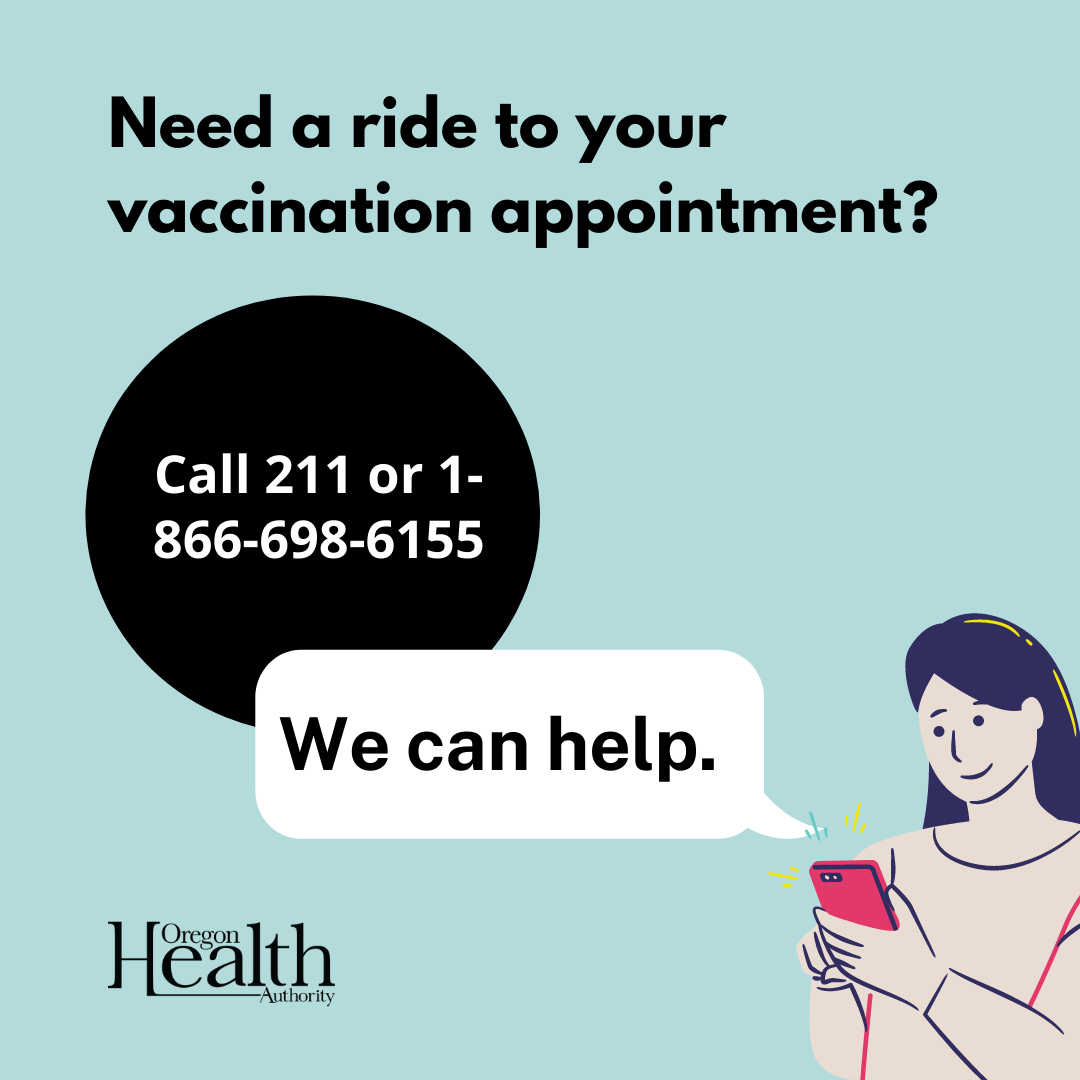
TODAY’S CORONAVIRUS AND CORONAVIRUS RESPONSE UPDATE
-
New COVID Cases: OHA reports 198 new COVID cases today. That’s an average of 170 per day for the 5 days since the last newsletter. The cumulative number of cases in Oregon since the beginning of the pandemic is 208,834.
-
Variant COVID Cases: Here are this week’s updated case counts for the COVID variants in Oregon, cumulative from the beginning of the pandemic (released on Wednesday). Be advised, though, that not all positive tests are being sequenced for variants, so the numbers are likely higher.
- 1,715 (up from 1,538) cases of the B.1.1.7 (formerly known as the U.K. variant, now called the Alpha) variant,
- 362 cases (up from 315) of the P.1 (formerly Brazilian, now Gamma) variant,
- 151 (up from 132) cases of the B.1.351 (formerly South African, now Beta) variant.
- In addition, we are now seeing 1,130 (up from 1,106) cases of the B.1.427/B.1.429 variant (Epsilon) and
- 13 cases (up from 10) cases of the new B.1.617.2 (Delta) variant.
- OHA’s Variant Dashboard also providing current variant case numbers for different parts of the state. It’s updated each Wednesday.
-
Positive Test Results: OHA reported 249 positive tests today. That’s an average of 270 per day for the five days since the last newsletter. The cumulative total of positive test results since the beginning of the pandemic is now 302,788.
-
Total Tests: OHA reported an additional 9,573 tests today. That’s an average of 9,368 per day for the five days since the last newsletter. Our cumulative total of reported tests is 5,430,206.
-
Positivity Rate: The test positivity ratio for Oregon today is 2.6%. That’s an average of 3.0% per day for the five days since the last newsletter.
-
Hospitalization Information:
- Patients Currently with Confirmed COVID-19: 134 (11 fewer than last newsletter)
- ICU Patients Confirmed w COVID-19: 27 (8 fewer than last newsletter).
- Available ICU Beds: 131 (17 more than last newsletter)
- Other Available Beds: 443 (102 fewer than last newsletter).
- Confirmed COVID-19 Patients Currently on Ventilators: 16 (same as last newsletter)
- Available Ventilators: 793 (35 fewer than last newsletter).
-
Deaths: I’m sorry to report 4 additional COVID deaths today. That’s an average of 3 per day for the five days since the last newsletter. The total number of COVID deaths in Oregon is 2,778.
-
Vaccinations:
- The 7-day running average is now 7,514 doses per day.
- Total First and Second Doses Administered So Far: 4,446,362
- 2,534,832 Pfizer doses
- 1,740,400 Moderna doses
- 168,932 Johnson & Johnson doses
- Total Oregonians vaccinated so far: 2,401,167
- 2,189,221 now fully vaccinated with two doses
- The number of Oregonians who still need to get a first dose for Oregon to reach the 70% threshold is now 5,119. That’s 26,145 fewer than was reported in the last newsletter. We should hit the 70% mark just ahead of the President’s July 4 target day.
- To date, 5,497,055 doses of vaccine have been delivered to sites across Oregon.
- 80.9% of these doses have been administered so far. The national average is now 85.8%.
- 58.8% of Oregonians have received at least one dose (66.2% of those 16 and older, 69.1% of those 18+, which is the CDC standard).
- 53.8% of Oregonians are now fully vaccinated (60.7% of those 16 and older).
- For more details, including the demographics of those receiving the vaccine and the number of vaccinations by county, go to the OHA vaccinations dashboard.
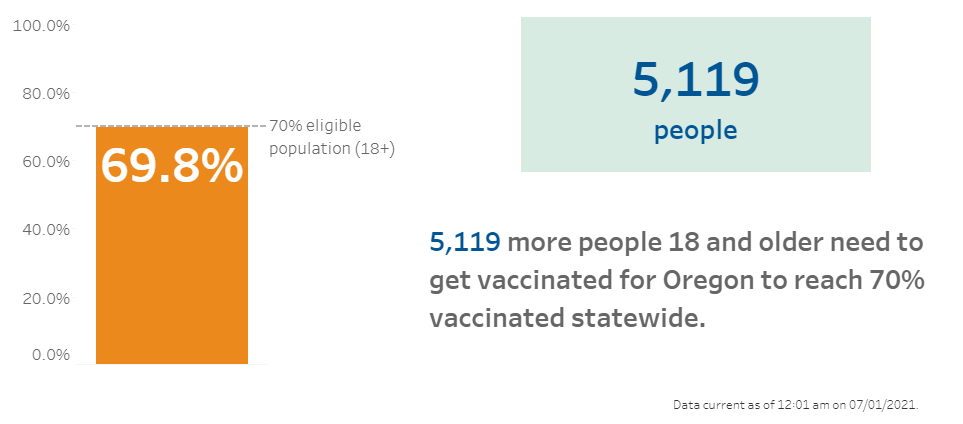 Additional Brief Updates
- Obviously, the big news here in Oregon is the lifting of COVID restrictions on June 30. Here's reporting from OPB and from the Oregonian.
- Even though mask-wearing rules have been lifted, there remain many among the vaccinated who are wondering whether or not they should continue to mask up when they’re in public. (I suspect we’ll be seeing fewer and fewer of that in the coming days as people get used to the new state of affairs.) Here's reporting from the Statesman-Journal. Spoiler-that-won’t-surprise: not everyone agrees.
- Los Angeles County is encouraging (though not yet requiring) residents to continue to wear masks in public settings, even if vaccinated, out of concern about the Delta variant of COVID. They are seeing an increasing number of cases of the Delta variant in the county, though the great majority of them are in unvaccinated individuals and very few have required hospitalization. They are following the advice of the World Health Organization, though many experts believe that the WHO advice is really only relevant for countries with low vaccination rates (as is the case for most countries now). Here's more from the Washington Post.
- Moderna has joined Pfizer in concluding that its vaccine works equally well against the more-contagious Delta variant of the virus.
- There is increasing evidence that the Pfizer and Moderna vaccines provide lasting protection from COVID. Here's the latest.
- Similarly, Johnson & Johnson announced today that its vaccine protects against the Delta variant and also offers long-term immunity without the need for a booster. Here's more on the opening.
- With COVID restrictions being lifted all over the U.S., we will surely continue to see cases—and perhaps an increasing number of cases--among those who remain unvaccinated. It remains crucial that we increase the number of vaccinations. And that will require us to figure out how to talk to those who continue to believe in COVID-vaccine myths that have been debunked, e.g., that the vaccine causes infertility in many women patients.
- Many people who remain unvaccinated don’t necessarily disbelieve in the vaccine’s efficacy, but impediments remain that keep them from taking that step. Enter “The Vaccine Fairy.” Here's an interesting story from OPB
- Despite significant efforts in many states, racial barriers to vaccinations remain. .Here's detailed reporting with a focus on Black Americans from the Washington Post
- Back in early May, I provided a link to a Washington Post story with advice to those starting to think about travel. That story has now been updated with additional information to reflect a much-changing landscape.
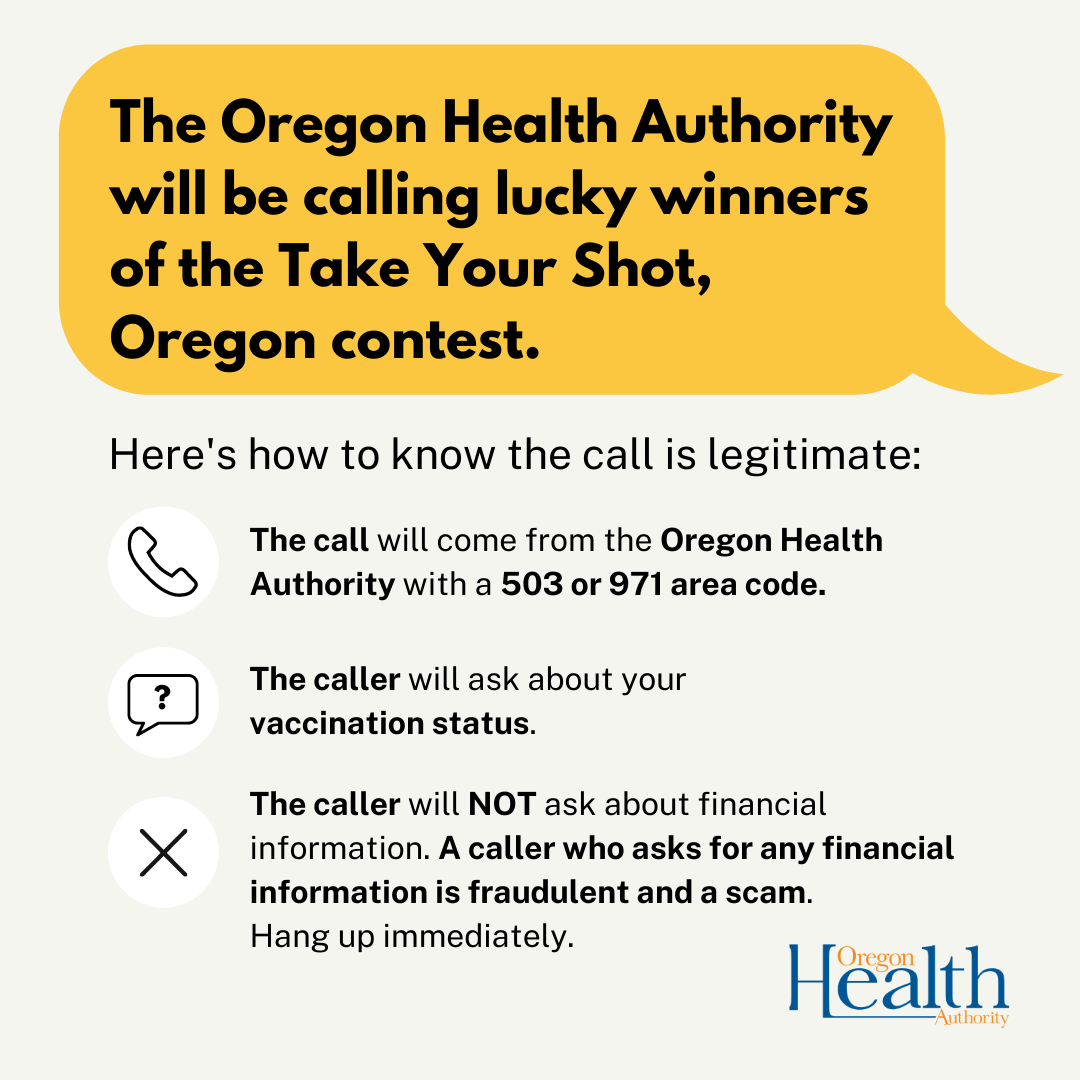 It's Constituent Coffee Time!!!
Saturday is the first Saturday of the month, so July 3, 9:00-10:30 a.m., will be our next zoom coffee.
If you were able to attend my post-Session town hall on Tuesday evening with Reps Kanh Pham and Barbara Smith Warner, you received a lot of information about the major accomplishments of the session and some of the disappointments. There unfortunately wasn’t much time for Q&A, and I’m sure you still have questions about what was and was not accomplished.
Fortunately, I’ll be holding my next zoom constituent coffee this Saturday morning, so we’ll have a chance to go deeper on the session.
Hope to see you there. You can register here.
Suggestions for Daily Updates on COVID Numbers
I’ll be continuing to provide COVID updates on a weekly basis. In some ways it’s actually better to look at the numbers that way, as it’s easier to see the broader trends. For those of you who like to see where we are each day, here are three suggestions for you:
-
The Oregon Health Authority Here is the OHA’s coronavirus page, with links to a number of resources. If you click on “News/Media,” you’ll be taken to their news page. At the top of the page are links to the daily news releases from OHA, including the new cases by county and information about individual deaths that I’ve been sharing. You can sign up to have these sent directly to your email address. At the bottom of the page are links to the detailed daily and cumulative numbers. (Starting this weekend, none of these OHA sources will be updated over the weekend or on holidays.)
-
The Oregonian takes the numbers provided by OHA and turns them into easy-to-read maps and graphs with a focus on Oregon. These will presumably no longer be updated on the weekends since OHA will no longer be publishing those numbers.
-
Bloomberg News provides a wealth of easy-to-read information on the trajectory of vaccinations—by state, nationally, and internationally. It’s updated each day though it too is limited by what is being reported by the CDC and by individual states.
-
The CDC: The Centers for Disease Control and Prevention provides a daily tracker that shows trends in cases, deaths, and testing.
Weekly COVID Data and Outbreaks Report Released: Further Declines
The Oregon Health Authority’s COVID-19 Weekly Report, released on Wednesday, shows another drop in daily cases, hospitalizations, and deaths from the previous week.
- OHA reported 1,371 new daily cases of COVID-19 during the week of Monday, June 21, through Sunday, June 27. That represents a 19% decline from the previous week and the lowest case count since the week of June 15–21,
- New COVID-19 related hospitalizations fell from 161 to 110.
- There were seven reported COVID-19 related deaths, down from 26 reported the previous week.
- There were 60,610 tests for COVID-19 for the week of June 20 through June 26, down from 68,601 the previous week.
- The percentage of positive tests was 3.2%, down slightly from 3.3% the previous week.
Today’s COVID-19 Weekly Outbreak Report again shows 21 active COVID-19 outbreaks in senior living communities and congregate living settings.
1/13/21 202 facilities
2/10/21 116 facilities
3/10/21 44 facilities
4/14/21 24 facilities
5/12/21 42 facilities
6/09/21 19 facilities
6/16/21 22 facilities
6/23/21 21 facilities
6/30/21 21 facilities
The Outbreak Report also includes the latest data on COVID in workplaces, childcare centers, and public and private K-12 schools.
The Latest on “Breakthrough Cases”
If you’re a Portlander, when you hear the phrase “First Thursday,” you may think of crowds of people descending on downtown Portland to visit arts galleries, hang out with friends, check out restaurants, or just people-watch. Or at least you have fond memories of that pre-COVID.
Well, now First Thursday has a new, less dreamy significance: it’s the day that OHA releases its monthly report on the prevalence of “breakthrough cases” in Oregon. Those are instances in which the coronavirus has managed to break through the defensive barrier created by the COVID vaccine. A breakthrough case is one in which the person has been fully vaccinated and at least two weeks has elapsed since their final dose.
Such cases are extremely rare, but they do occur, as no vaccine is perfect. Some people (especially among people of advanced age) have difficulty forming defensive antibodies, even with the benefit of a vaccine.
The latest breakthrough report was released this afternoon and can be found here.
Here are some highlights:
- Through June 30, Oregon Health Authority has identified 1,790 COVID-19 vaccine breakthrough cases. There were 7,241 cases of COVID-19 in June and 92% of these cases were among people who were unvaccinated.
- Of that small number of people who were infected despite having been vaccinated, nearly all of them were asymptomatic or had mild cases of the disease. Only 11% of that small number ultimately needed to be hospitalized, and only 2% of that small number ultimately died of the disease.
- The majority of the small number of vaccine-breakthrough deaths have occurred in the elderly. The median age for breakthrough deaths is 83 (the youngest being 53 and the oldest 100).
- Of the 1,790 reported vaccine breakthrough cases, approximately 10% (n=177) were observed in individuals who reside in long-term care facilities or other congregate care settings.
For those who might be wondering if it’s even worth getting the vaccine if you could get the disease anyway, the evidence from this latest report shows that by far you are making yourself (and potentially those around you) far, far safer if you are vaccinated.
More On Breakthrough Cases
On Wednesday, June 23, State Epidemiologist and Health Officer Dr. Dean Sidelinger and Sky Lakes Medical Center Chief of Medical Staff Dr. Bob Jackman provided answers to many of the questions that people have about breakthrough cases and their significance.
Watch the video here.
Here are the timestamps for each question:
7:19 – Are you tracking which vaccine the breakthrough cases are happening in?
8:08 – Is there a breakdown of breakthrough cases by vaccine?
8:54 – Why get the vaccine if you can still get COVID-19?
10:51 – Do breakthrough cases account for natural immunity?
13:00 – Can you please let us know for each COVID-19 death whether the person had been vaccinated?
14:05 – Is the Johnson & Johnson vaccine protective against the Delta variant?
15:17 – What about boosters?
16:28 – How long should people wait to get vaccinated after they've been sick with COVID-19?
17:31 – How is breakthrough data gathered? At testing or treatment or with hospitalization?
18:30 – Where are the breakthrough cases occurring, through community spread or close contacts?
19:24 – There is data showing that natural immunity from other SARS viruses can last up to 17 years, why should we assume that immunity from this SARS virus is different?
21:01 – Do you have any sense for how clean the breakthrough data is, i.e. when folks complete their injections are they strongly advised to continue getting tested if they come down with respiratory symptoms, or is it possible that mild breakthrough cases are not being logged because folks assume they are immune and therefore don’t get tested?
22:19 – Is there any data on whether breakthrough cases are more frequent in immunocompromised people?
23:20 – I notice you hardly ever mention pediatric cases. Once 12 and up were eligible, you admitted there had been several pediatric surges and that cases in that age range were a big problem. Shouldn't parents of younger children be aware of the risk level?
25:43 – Could someone who received the Johnson & Johnson vaccine three months ago also get a Pfizer or Moderna dose to help increase protection against breakthrough cases?
27:23 – If a person received a first dose of a COVID-19 vaccine dose in another country with a different vaccine than the ones offered in the U.S., can you later get vaccinated here and how long do you have to wait to take the first dose in the U.S.?
2021 Session in the Rearview Mirror
The dust is still settling on the frantic final days of the legislative session, but my initial sense that this was an extremely productive one is increasingly confirmed. I’ve begun to compile a list of the bills and budget investments that were passed. In the coming weekly newsletters, I’ll be sharing with you some of the accomplishments, broken down by subject area.
I’ll start with the area that was the focus of the committee that I chaired, Senate Education. Taking over the Education gavel allowed me to jump in and go back to some of my earlier priorities from my days in the House, chairing House Higher Education (health care for PT faculty, tuition equity, removing barriers to college transfer), and finally get them done. In addition, the racial reckoning and related self-analysis unleashed by the murder of George Floyd has provoked us to look at the residual effects of systemic racism that lead to disproportionate rates of failure for students of color. We accepted the challenge and were able to develop and pass a number of bills that will create long-term improvements in our systems to right these wrongs. Finally, our very positive budget outlook, along with substantial support from the federal government, has allowed us to put major investment dollars into education at all levels (childcare/Pre-K, K-12, and post-secondary) for the first time in my legislative career. I can’t tell you how great that feels.
Here's a list of the major Education bills passed this session.
Heat and Wildfires
As I write this, 79 Oregonians are reported to have died as a result of the awful heat wave that we experienced this past week. Whether or not you believe (as I do) that this is largely a manifestation of a human-induced climate crisis, I know you agree that we are facing serious, ongoing challenges. Whatever the causes, we can all agree that we need to step up and protect one another from the symptoms: excessive heat, drought, compromised water systems, and wildfires.
I’m proud to say that the Legislature has stepped up in a big way this session with hundreds of millions of dollars in wildfire prevention, emergency housing and other forms of survivor support, and nearly $600 million in water infrastructure upgrades. I’ll go into detail on those in future newsletters.
We know that the heat and the drought have made our forests and grasslands virtual powder kegs. Two weeks ago we learned from ODF Wildfire Director Doug Grafe that we had already seen five times the average number of acres burned across Oregon (ten-year average). Doug has just sent legislators the second wildfire report. Here it is. As you’ll see, the picture has improved slightly on the West side of the Cascades with the cooling temperatures, but overall the picture remains grim. Firefighters are hard at work in various parts of the state already.
Of course, whether it’s heat or fire (or at other times flooding and ice storms), it’s not just local, state, and federal government that steps up to provide shelter and support; much of the work is done by aid organizations like the Red Cross. As you can imagine, the Red Cross had its hands full with the heat emergencies experienced in much of the state earlier this week, not to mention the wildfires that are already underway. Here's a summary of their efforts, sent out to legislators earlier today.
It shouldn’t surprise you that there is an ongoing need for blood donations. Donations really plummeted during the heat wave (though frankly it was a nice, air-conditioned way to escape the heat!). For me, the habit that I developed during the pandemic of donating platelets every other week is one of those COVID habits that I hope to continue. Whether it’s platelets or whole blood, please consider donating if you can.
And the Deaths:
Here is information about the deaths that OHA has reported since the last newsletter on Saturday. They include several from earlier weeks and months (one as far back as last August!) that for various reasons were held up in the transmission channel from death certificate to CDC to OHA.
Oregon’s 2,764th COVID-19 death is a 92-year-old man from Curry County who tested positive on June 18 and died on June 28 at his residence.
Oregon’s 2,765th COVID-19 death is a 67-year-old man from Coos County who tested positive on June 24 and died on June 26 at Mercy Medical Center Mt. Shasta.
Oregon’s 2,766th COVID-19 death is a 42-year-old woman from Lane County who tested positive on June 17 and died on June 25 at her residence.
Oregon’s 2,767th COVID-19 death is a 64-year-old man from Multnomah County who tested positive on May 13 and died on June 19 at Kaiser Sunnyside Medical Center.
Oregon’s 2,768th COVID-19 death is a 57-year-old man from Washington County who tested positive on April 11 and died on May 2 at Oregon Health & Science University Hospital.
Oregon’s 2,769th COVID-19 death is a 61-year-old man from Washington County who tested positive on Nov. 25, 2020 and died on May 18 at Legacy Meridian Park Medical Center. The death certificate listed COVID-19 disease or SARS-CoV-2 as a cause of death or a significant condition contributing to death.
Oregon’s 2,770th COVID-19 death is a 99-year-old woman from Washington County who tested positive on Jan. 2 and died on Jan. 8 at her residence.
Oregon’s 2,771st COVID-19 death is an 80-year-old woman from Jefferson County who tested positive on June 5 and died on June 28 at St. Charles Bend Hospital.
Oregon’s 2772nd COVID-19 death is an 88-year-old man from Jackson County who tested positive on June 26 and died on June 29 at Providence Medford Medical Center.
Oregon’s 2,773rd COVID-19 death is a 70-year-old woman from Malheur County who tested positive on July 31, 2020 and died on August 4, 2020 at St. Alphonsus Medical Center.
Oregon’s 2,774th COVID-19 death is an 84-year-old man from Lane County who tested positive on June 15 and died on June 28 at McKenzie-Willamette Medical Center.
Oregon’s 2,775th COVID-19 death is a 64-year-old man from Columbia County who tested positive on June 10 and died on June 18 at Legacy Good Samaritan Medical Center.
Oregon’s 2,776th COVID-19 death is a 49-year-old woman from Coos County who tested positive on June 14 and died on June 28 at Oregon Health & Science University Hospital.
Oregon’s 2,777th COVID-19 death is a 72-year-old man from Harney County who tested positive on June 22 and died on June 30 at his residence.
Oregon’s 2,778th COVID-19 death is an 87-year-old man from Jefferson County who tested positive on June 10 and died on June 25 at his residence.
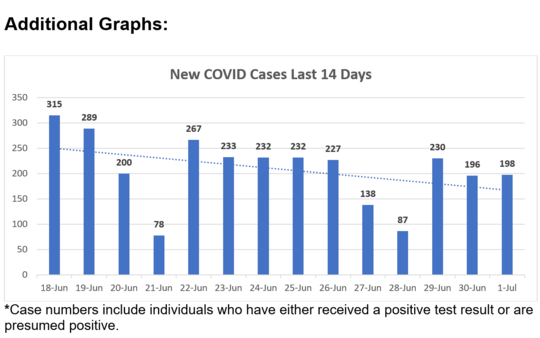
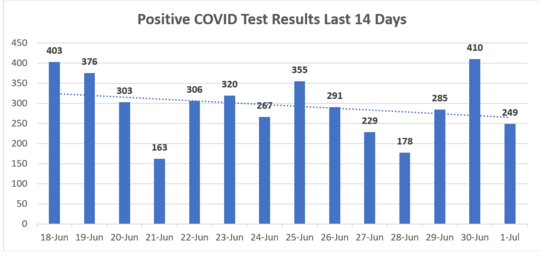
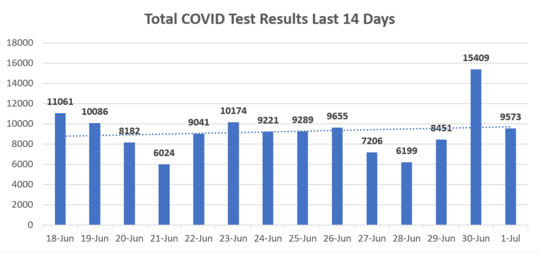
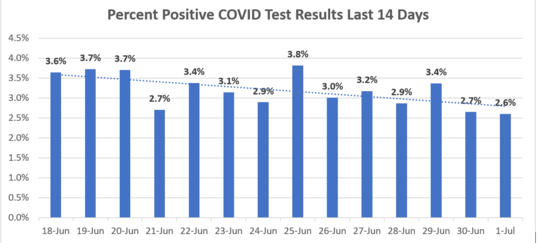
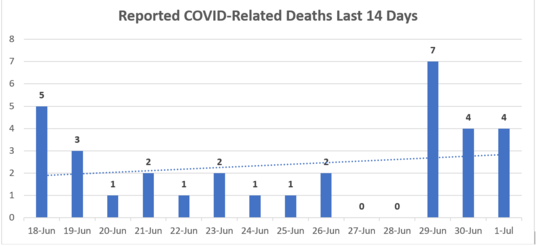

Want to See Past Newsletters?
If there was COVID-related information in a past newsletter that you want to go back to, but find you’ve deleted it, you can always go to my legislative website (senatordembrow.com), click on “News and Information,” and you’ll find them all there. Also, if someone forwarded you this newsletter and you’d like to get it directly, you can sign up for it there.
AND FINALLY,
Here again are some resources that you will find useful
If the above links are not providing you with answers to your questions or directing you to the help that you need, please consider me and my office to be a resource. We’ll do our best to assist you or steer you in the right direction.
Best,
 Senator Michael Dembrow
District 23
email: Sen.MichaelDembrow@oregonlegislature.gov
web: www.senatordembrow.com
phone: 503-281-0608
mail: 900 Court St NE, S-407, Salem, OR, 97301
|